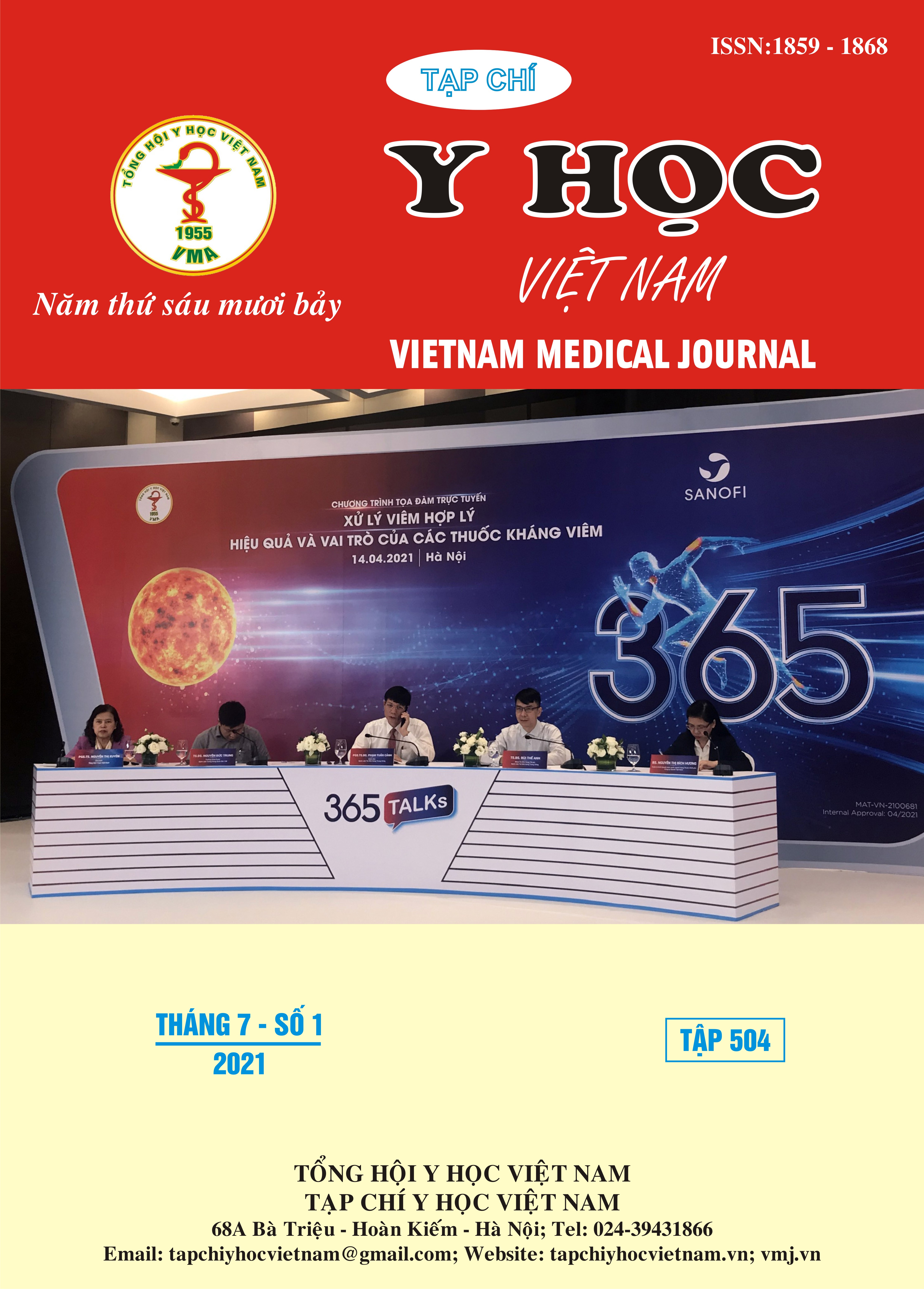INVESTIGATION THE CLINICAL, LABORATORY, AND LESION CHARACTERISTICS IN PATIENTS WITH ACUTE CORONARY SYNDROME AND BIFURCATION LESSIO STENTING
Main Article Content
Abstract
Objectives: To evaluate the clinical, laboratory, and lesion characteristics in patients with acute coronary syndrome (ACS) and bifurcation lesions stenting. Method: Observational study. This case series included 141 ACS patientswith bifurcation lesion underwent percutaneous coronary intervention at Vietnam National Heart Institute and Hanoi Medical University Hospital from May, 2014 to Dec, 2017.Results: The mean age of patients was 66,11 ± 9,42 years; male/female ratio was 2.71/1. Hypertension was present in 78.72% of the patients, diabetes and smoking were present in 29.79% and 24.11% of the patients, respectively. 27.66% and 7.8% of the patients had a ST elevation myocardial infaction (STEMI) and Non-STEMI, respectively. Unstable angina was present in 64.54% of the patients. Electrocardiogram (ECG) was normal in 37.59% of the patients and ST segment elevation occured in 27.66% of cases. The mean left ventricular ejection fraction (LVEF) was 57.5±13.5 (%) and89.21% of patients with LVEF ≥ 40%. Angiographic characteristics, right coronary artery dominance was present in 94.33% of the patients and multivessel disease present in 34,04% of the patients.The mean SYNTAX score was 18 ± 6.3 and 80.85% of the patient had SYNTAX score less than 23. A total of89.36% of the bifurcation lesions locatedinthe left anterior descending artery. Locations of bifurcation lesions of target vessel were present in79.43% in the left anterior descending-diagonal; 96.45% of the patients were typeB2 and type C lesions (AHA/ACC Classification). 48.23% of the patients had a Medina 1.1.1 bifurcation, and 30.5% of the patients had a Medina 1.1.0 bifurcation; true bifurcation lesions occurred in 59.57% of the patients (that is, Medina 1.1.1 or Medina 1.0.1 or Medina 0.1.1 according toMedina classification). 79.43% of the patients had a bifurcation angle α<70o. Conclusion: This disease was more prevalent in male patients with advanced age and hypertension was the most cardiovascular risk factor. SYNTAX score < 23were the most of cases. Coronary bifurcation lesions were usuallyoccuredin the left anterior descending artery. Medina1.1.1 bifurcation and Medina 1.1.0 bifurcation were the most of the patients.
Article Details
References
2. Louvard Y. và Medina A. (2015). Definitions and classifications of bifurcation lesions and treatment. EuroIntervention. 2015;11:V23-V26.
3.Louvard Y., Thomas M., Dzavik V., et al. Classification of coronary artery bifurcation lesions and treatments: Time for a consensus! Catheterization & Cardiovascular Interventions 2008; Pages 175-183.
4. Medina A, Suárez de Lezo J, Pan M. (2006), [A newclassification of coronarybifurcationlesions].Rev Esp Cardiol. 2006 Feb;59(2):183 - 184.
5. Lassen JF, Holm NR, Stankovic G, et al. Percutaneous coronary intervention for coronary bifurcation disease: Consensus from the first 10 years of the european bifurcation club meetings. EuroIntervention. 2014;545–560.
6. Zhang J.-J., Ye F., Xu K. và cộng sự. (2020). Multicentre, randomized comparison of two-stent and provisional stenting techniques in patients with complex coronary bifurcation lesions: the DEFINITION II trial. Eur Heart J, 41(27), 2523–2536.
7. Bùi Long (2019), Nghiên cứu kết quả điều trị can thiệp bệnh nhân hội chứng động mạch vành cấp bằng stent phủ thuốc có polymer tự tiêu, Luận án tiến sĩ Y học, Học viện Quân Y.
8. Briguori C., Donahue M., Visconti G. và cộng sự. (2017). Coronary artery bifurcation narrowing treated by Axxess stent implantation: The CARINAX registry. Catheter Cardiovasc Interv, 89(4), E112–E123.


